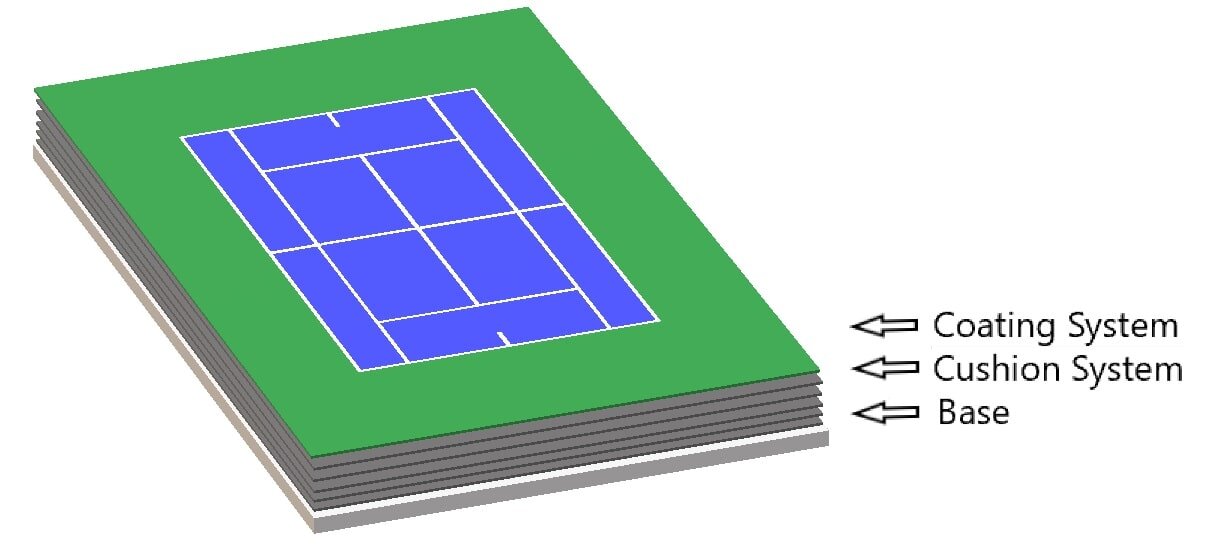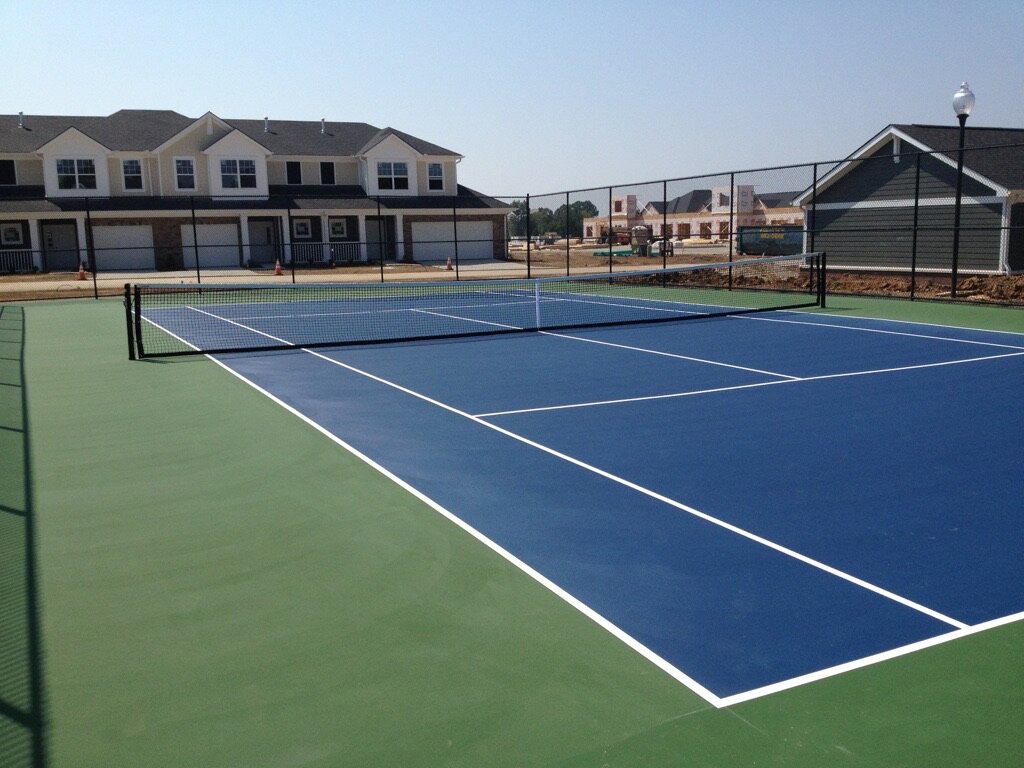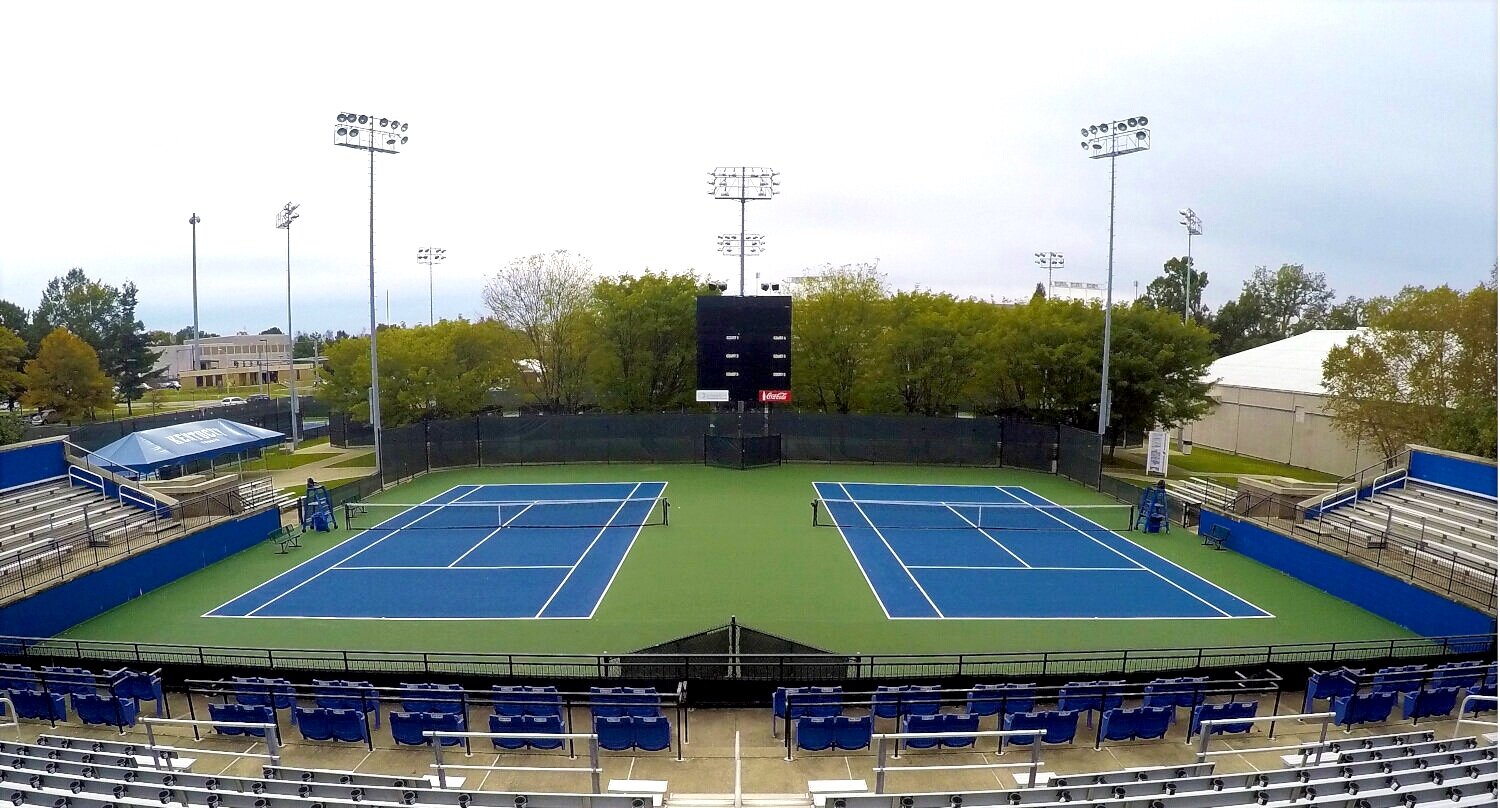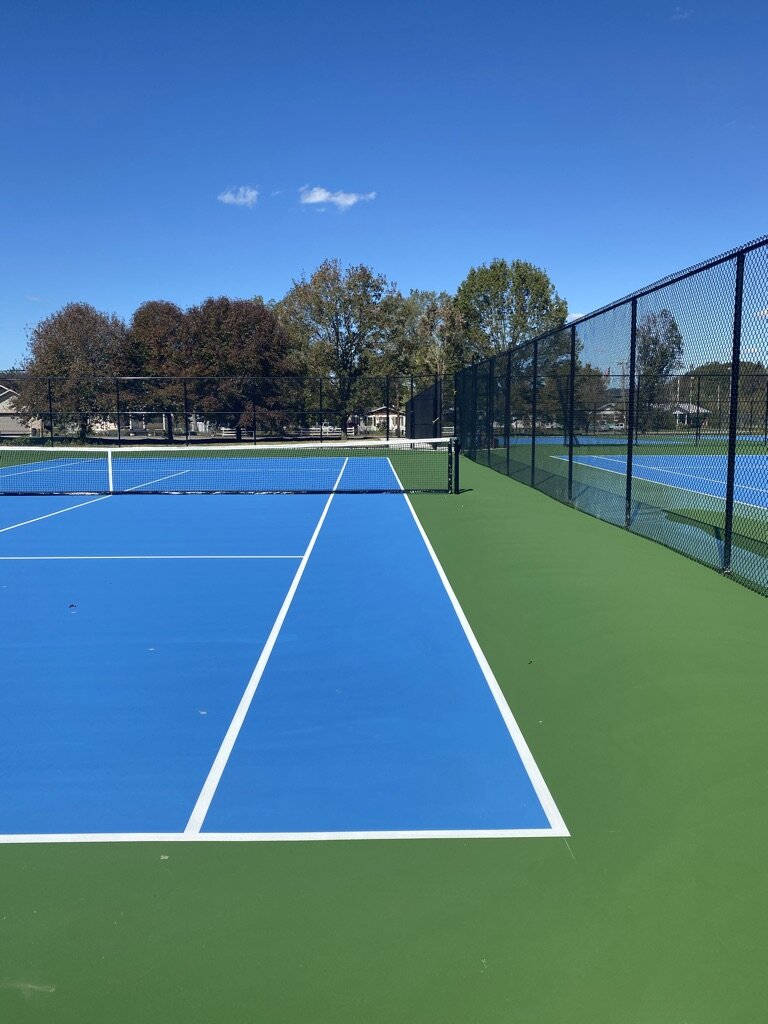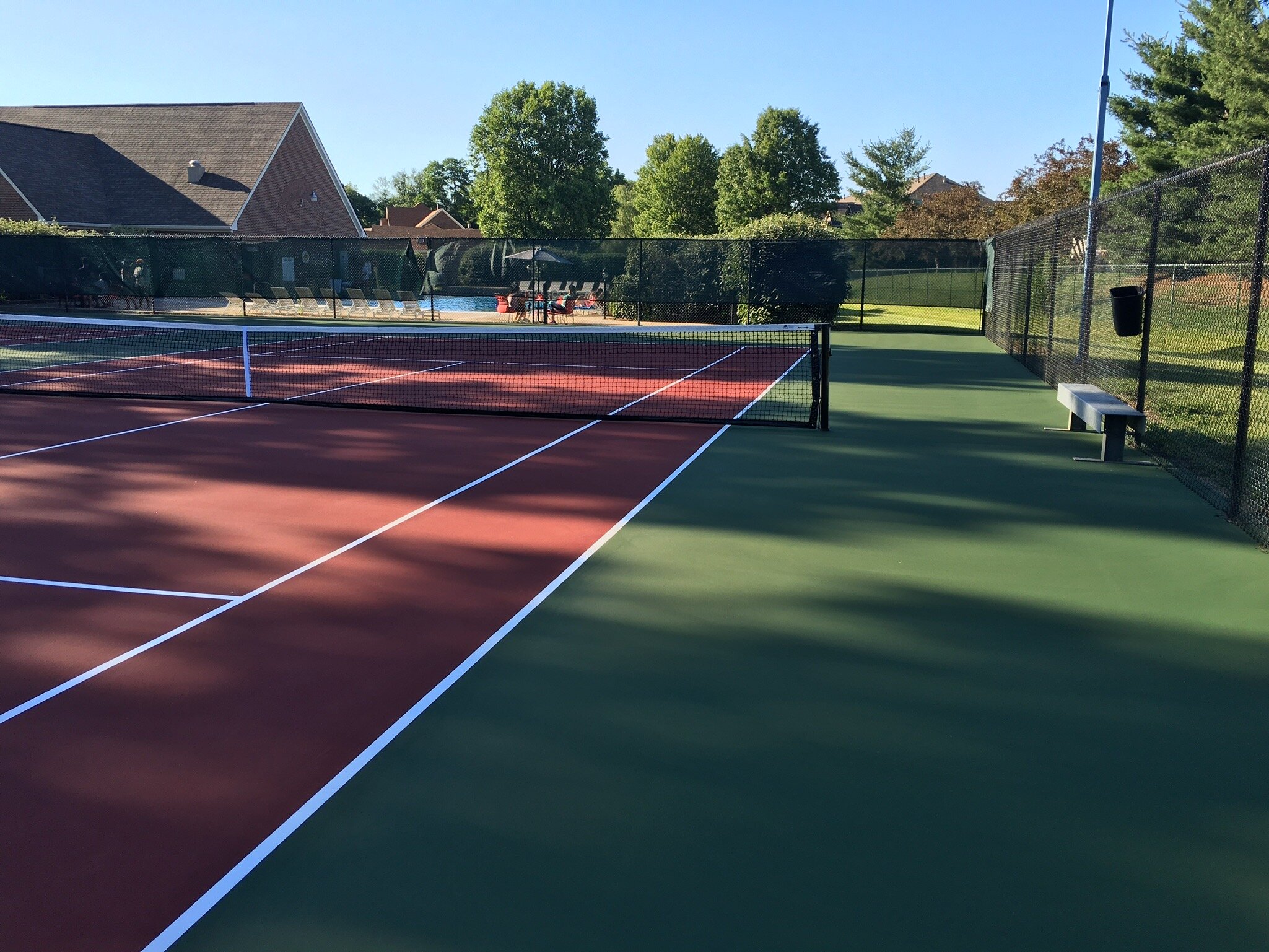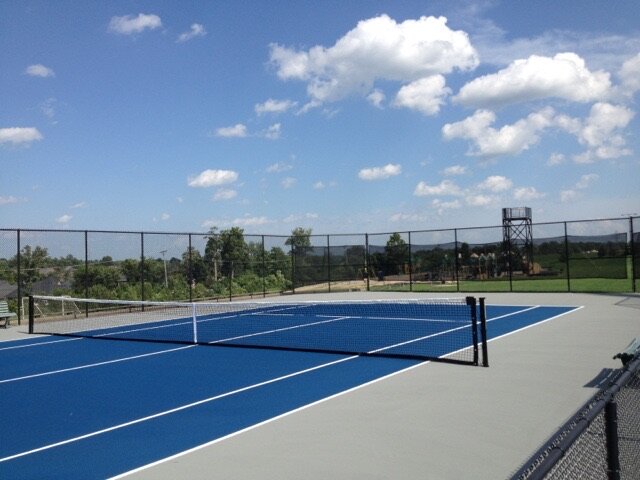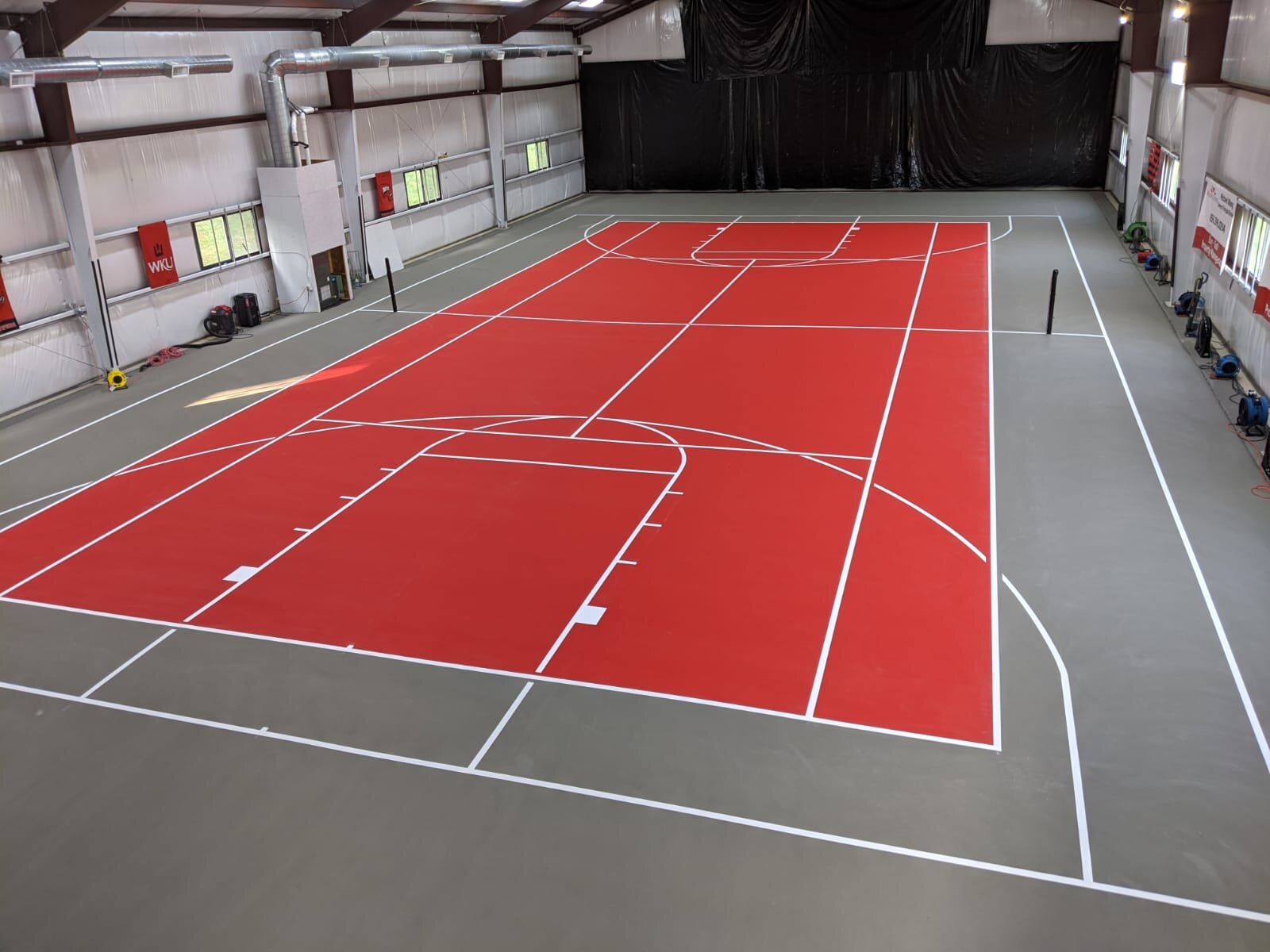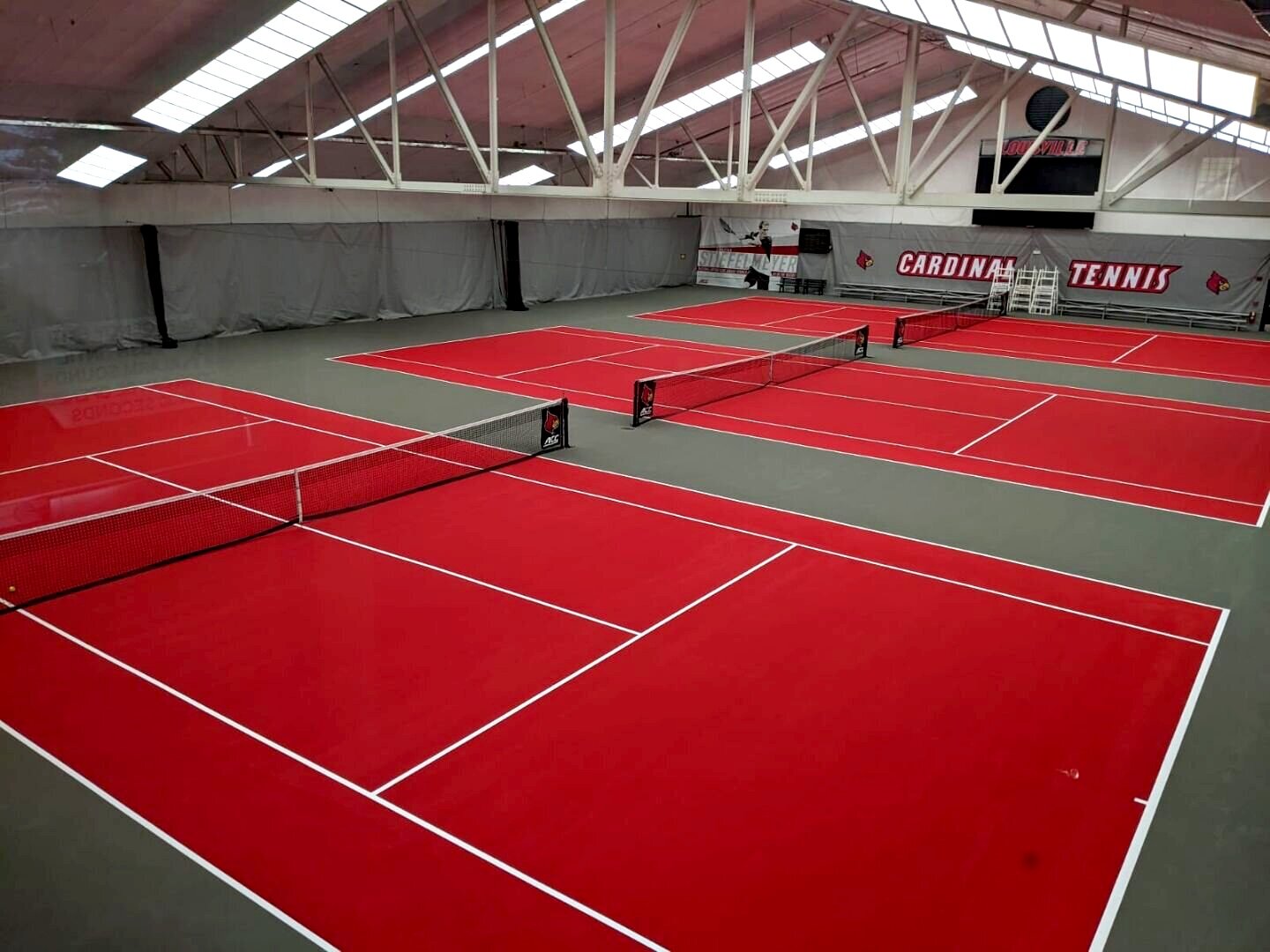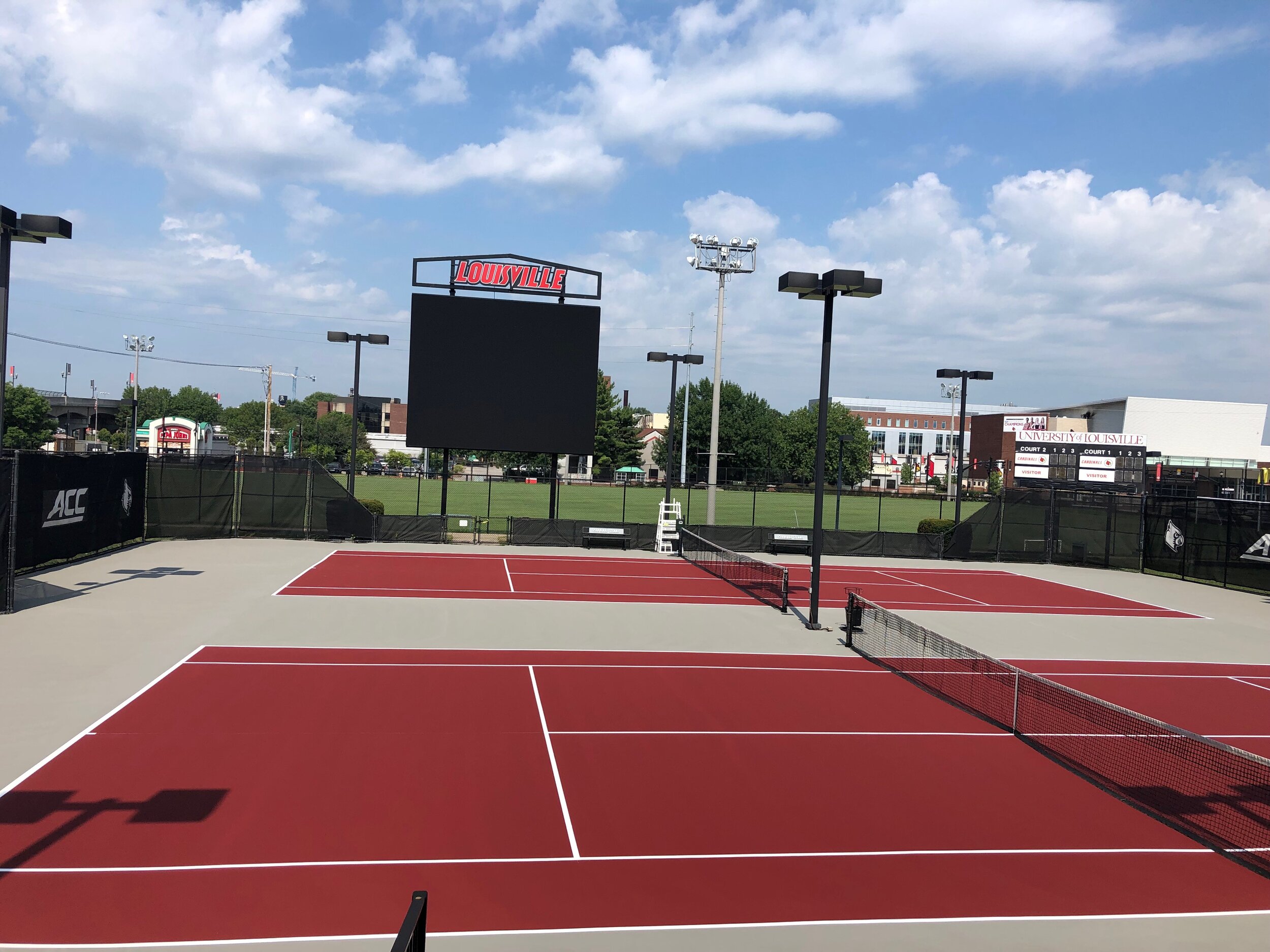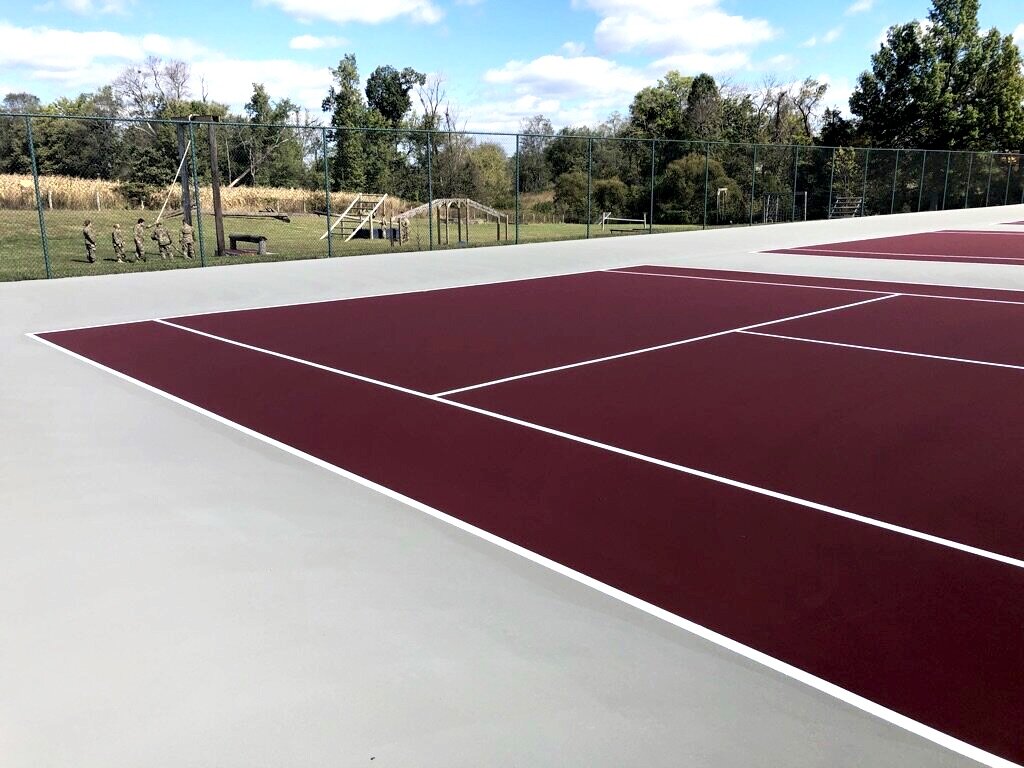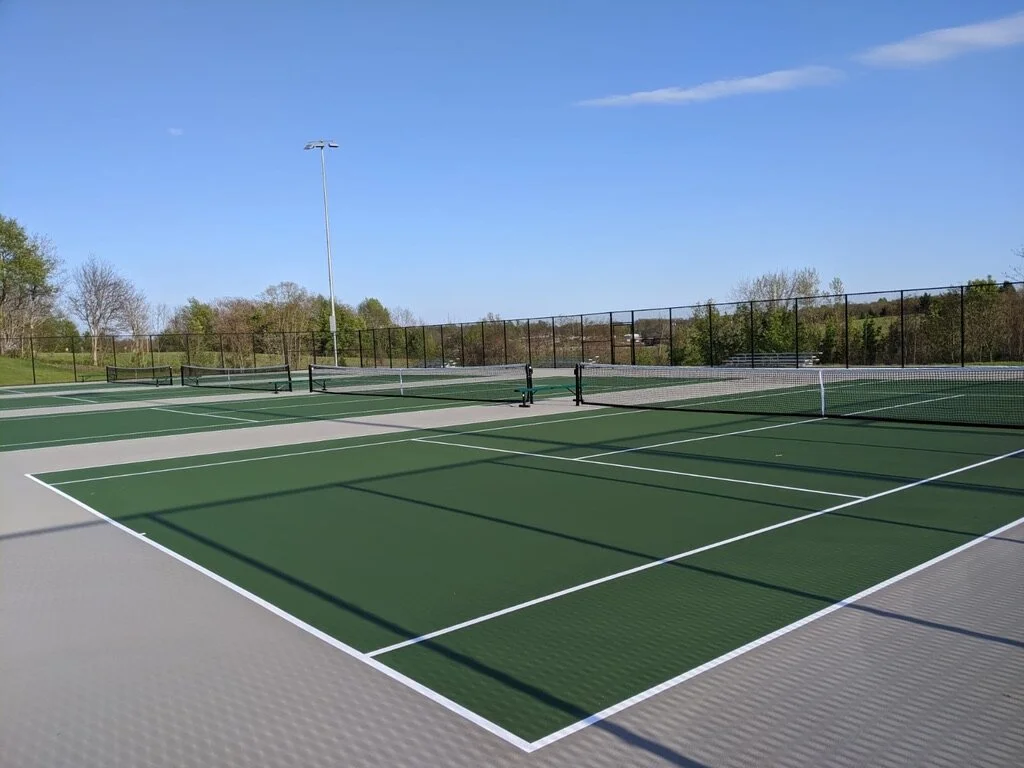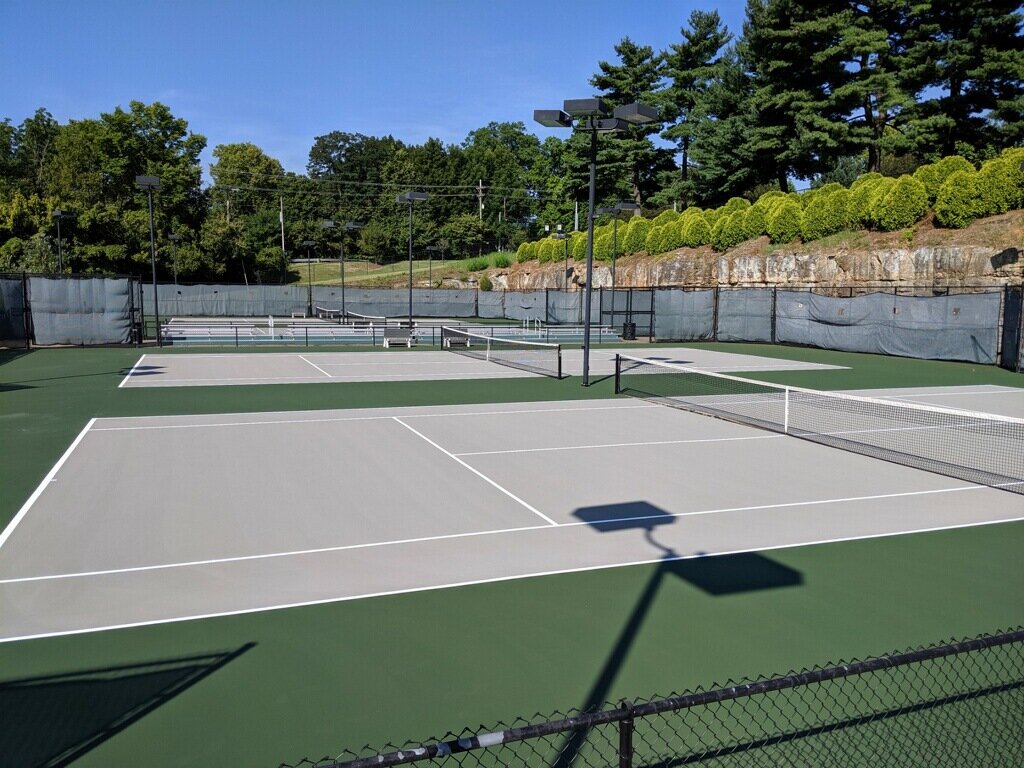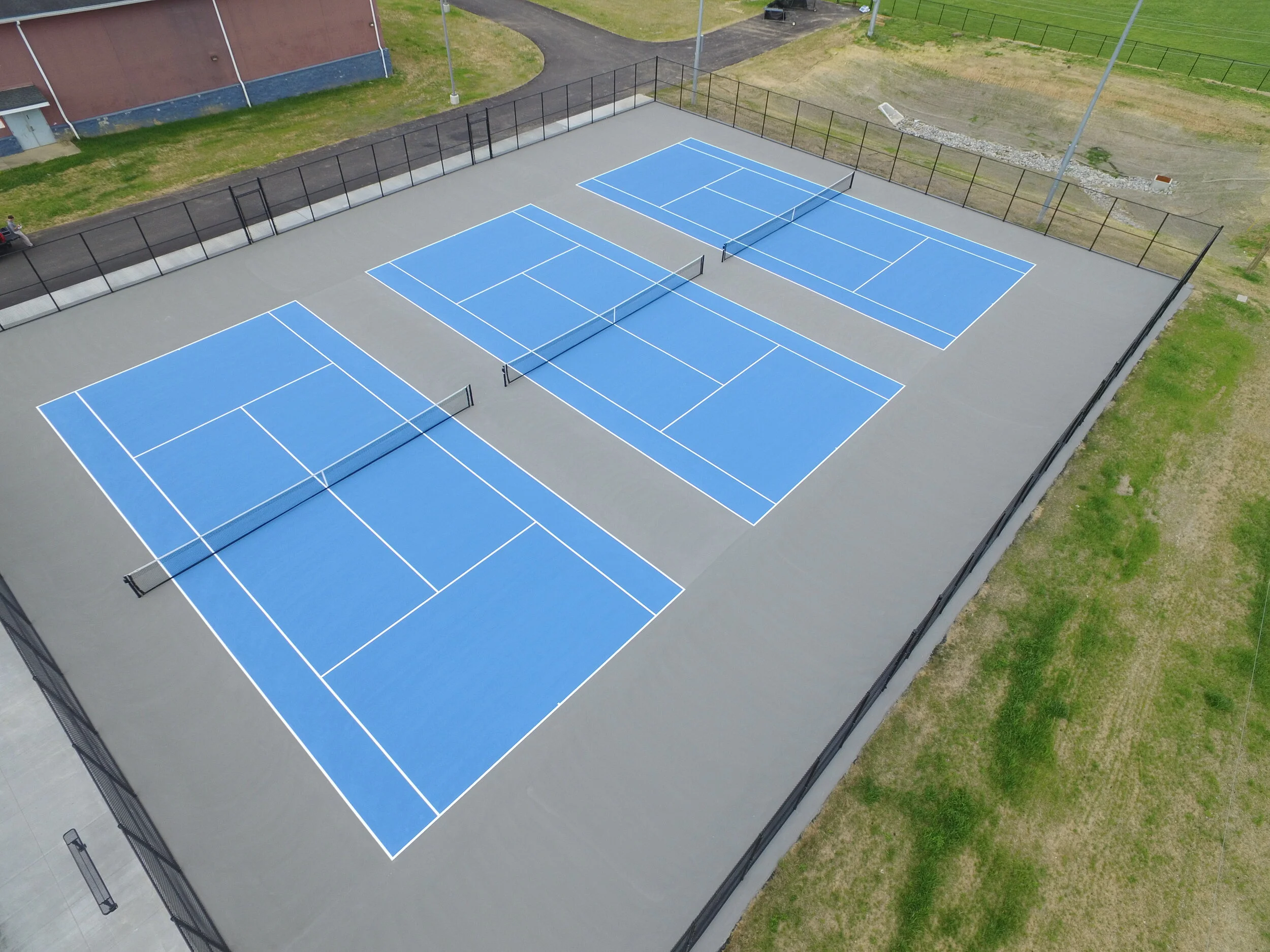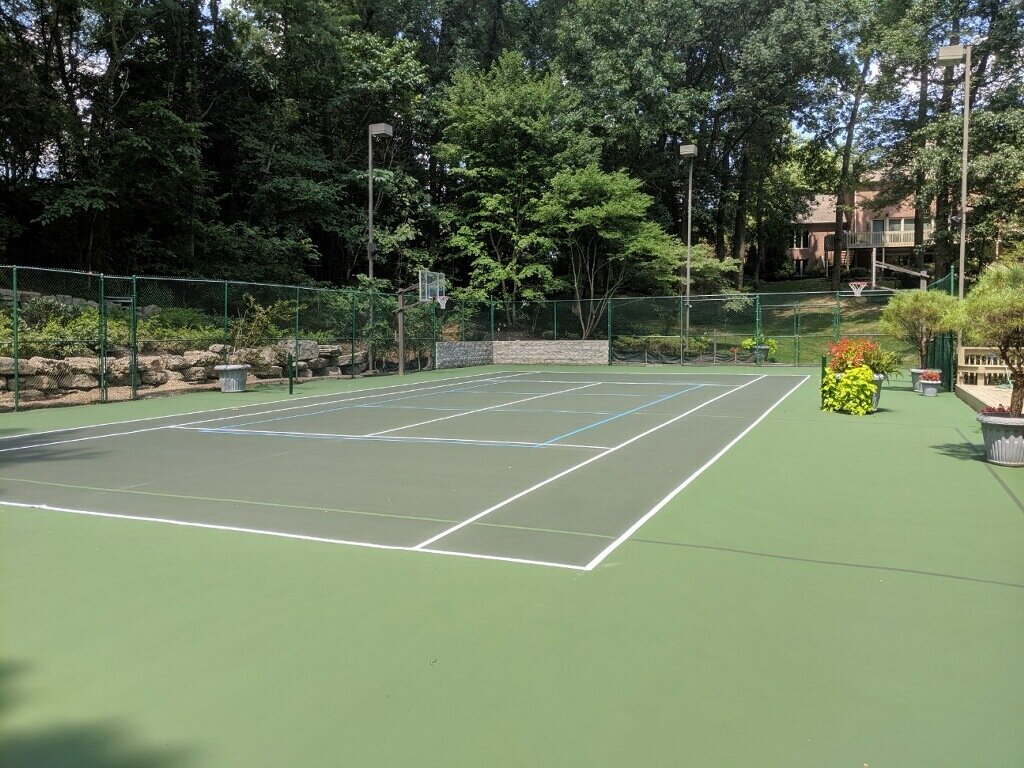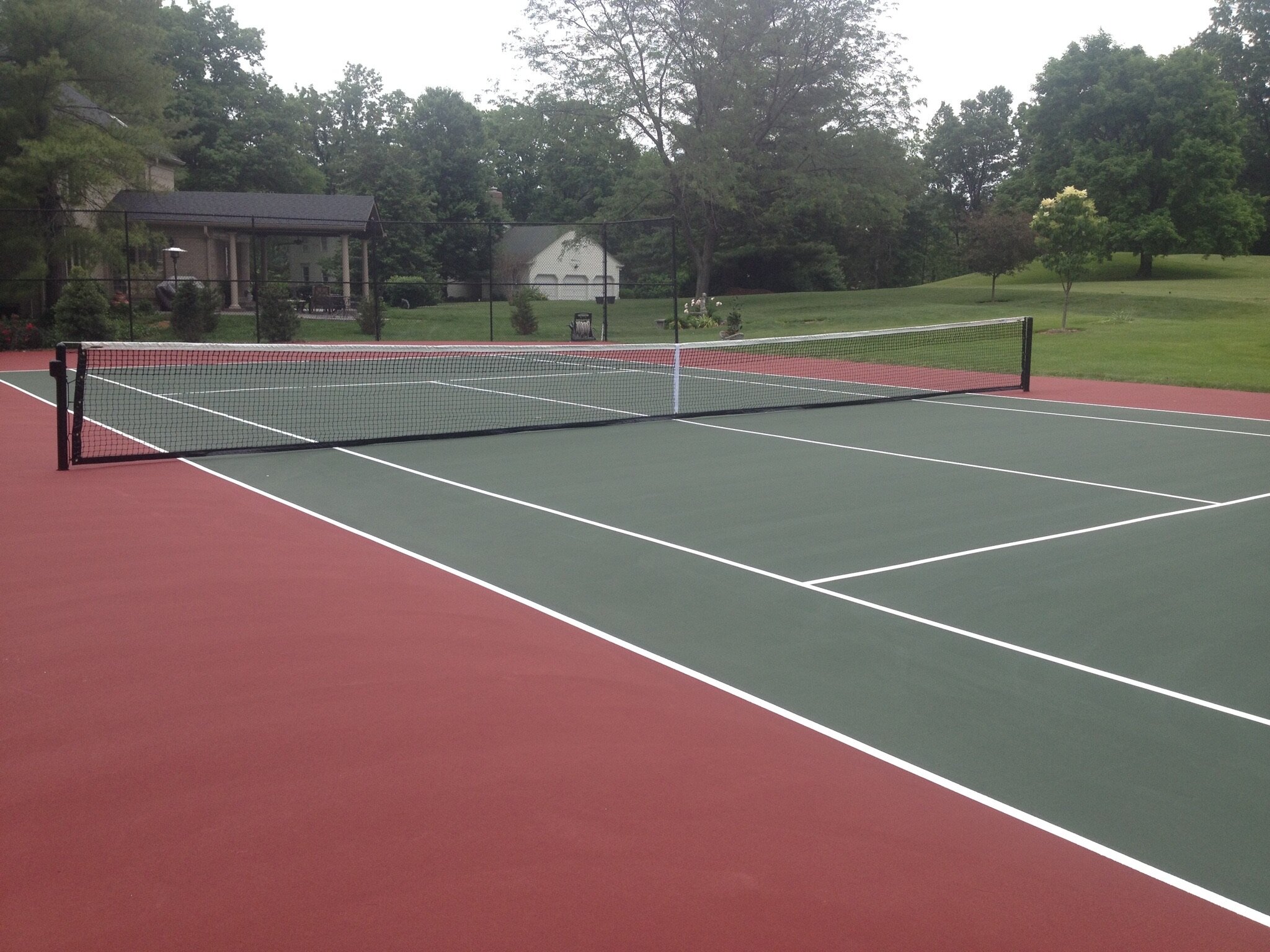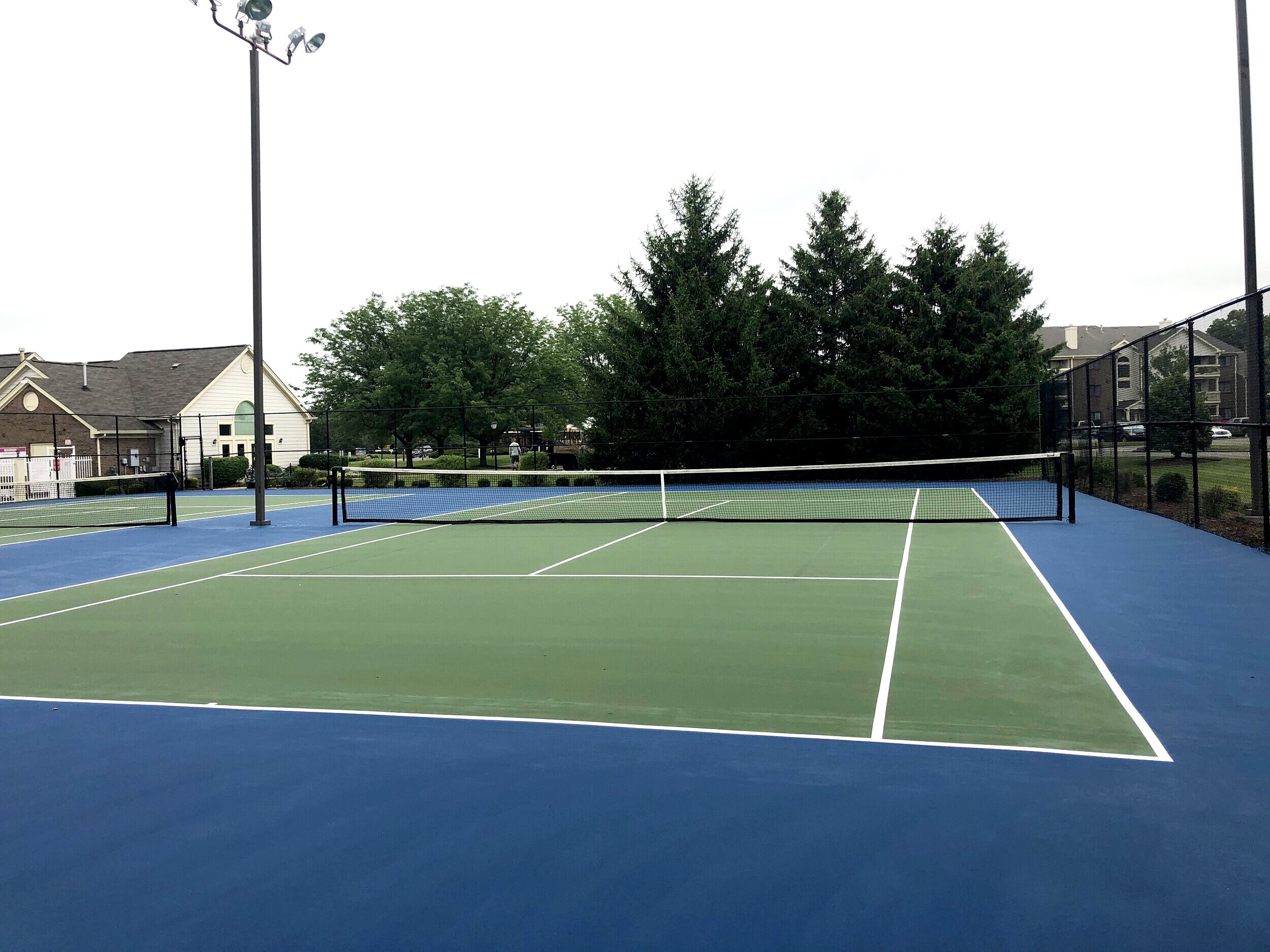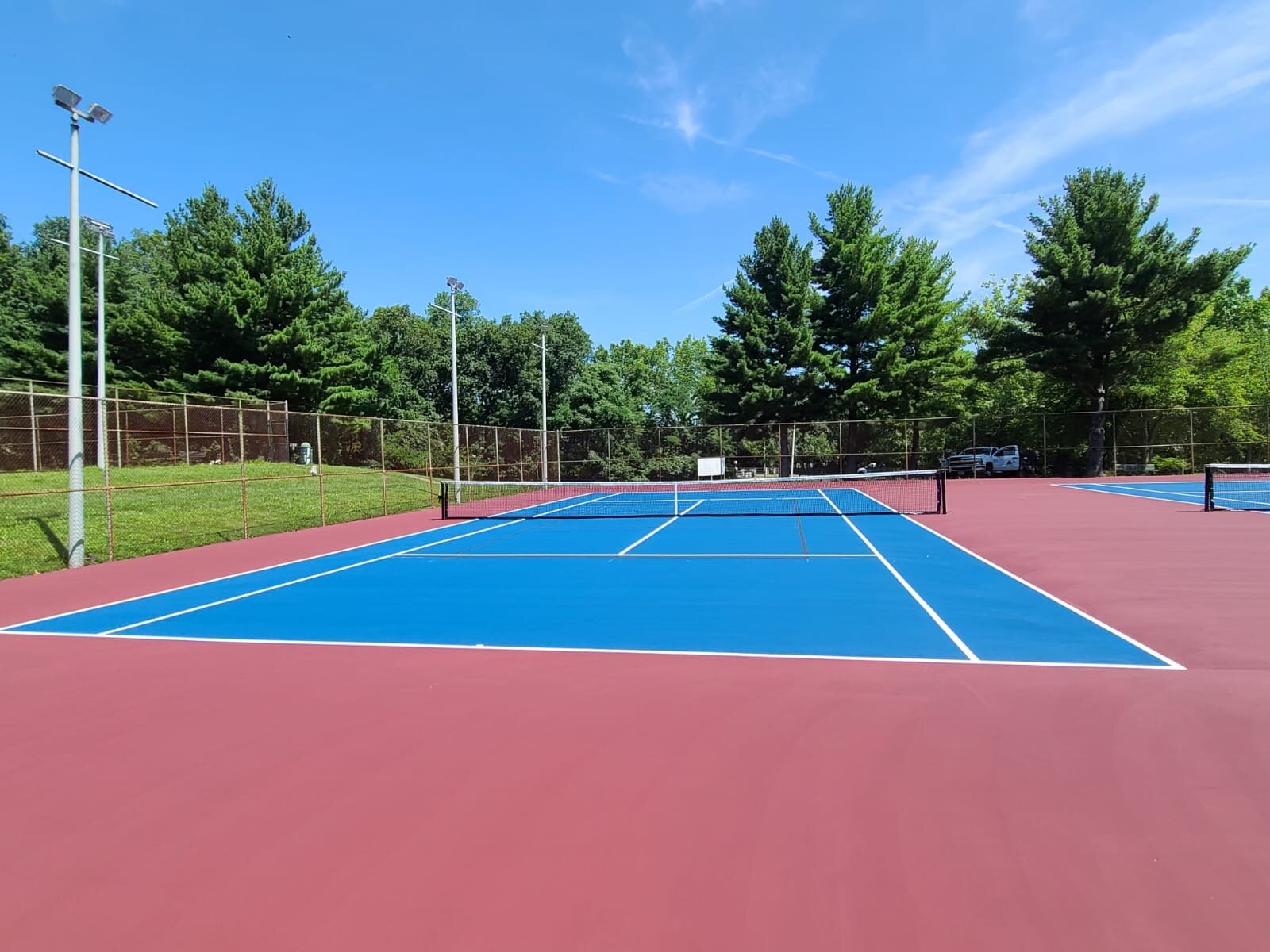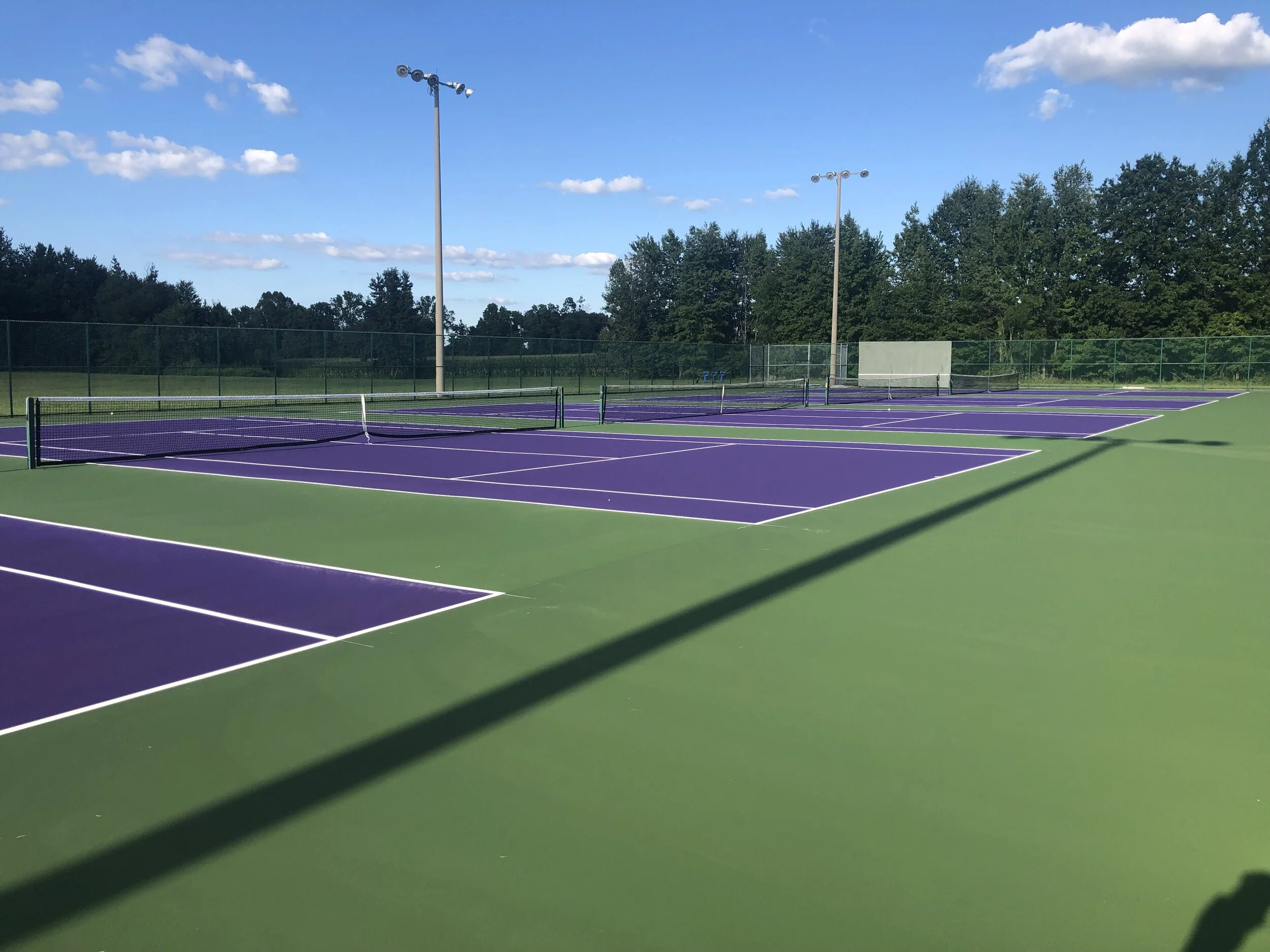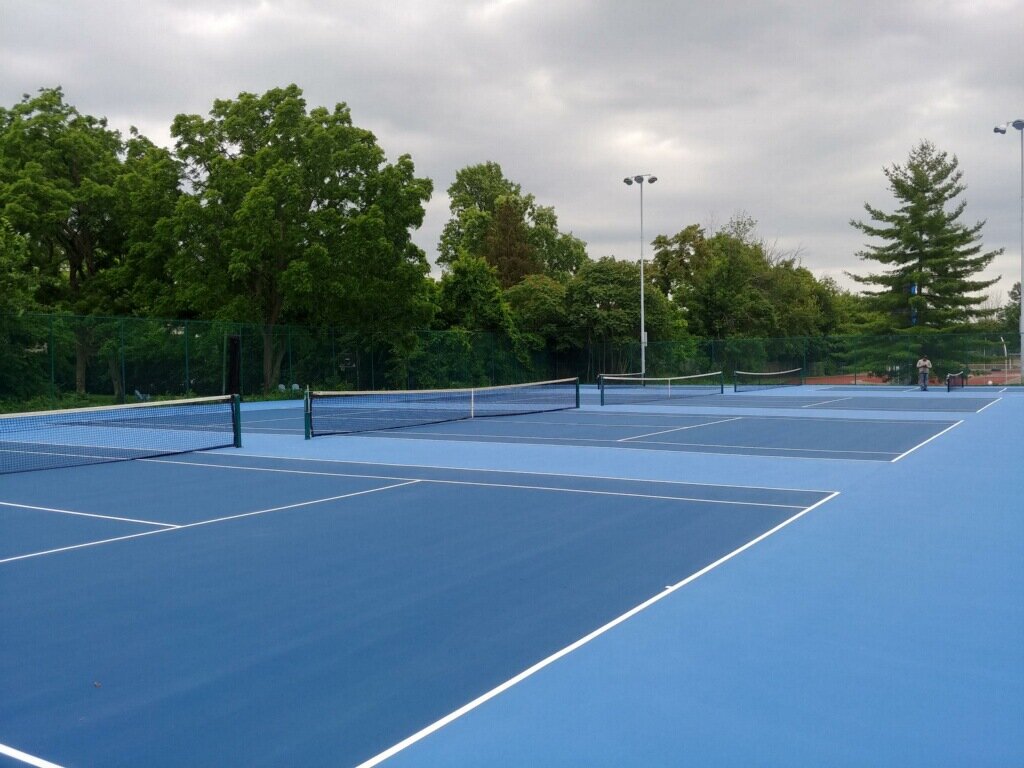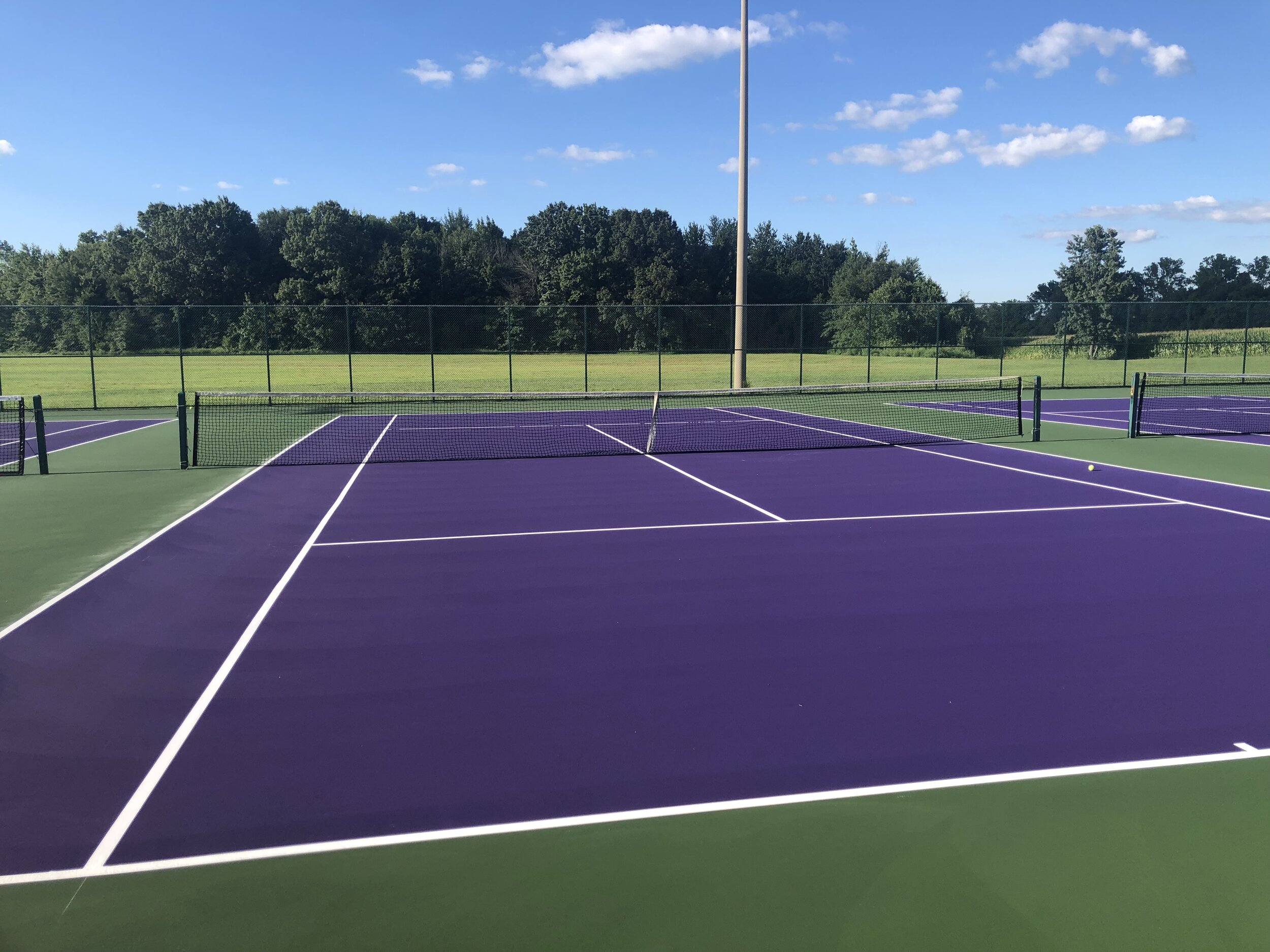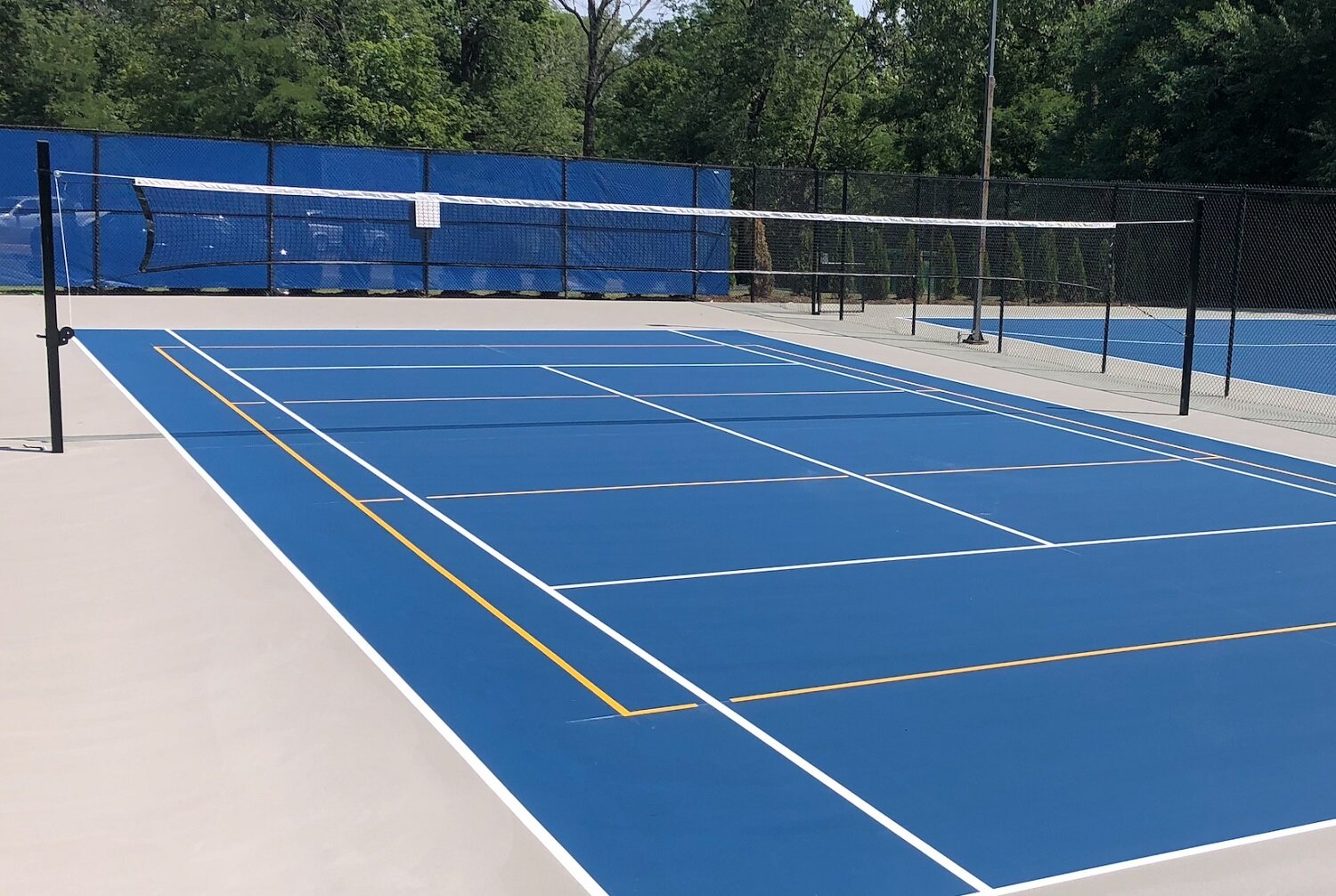Tennis Court Construction and Installation
Tennis Technology, Inc. has been constructing tennis courts for over forty years. We have the experience to design, build, and surface the best tennis courts possible. Our courts can come in a variety of types, where the speed of play and the amount of cushion within the surface can be adjusted. The primary courts we install are asphalt or concrete based hard-courts, carpet overlays, rubberized-cushion courts, and clay courts. Our surfaces are built to last longer and are used for professional tournament play, including USTA pro-circuit events.
We offer the following services:
- New Construction
- Crack Repair
- Leveling
- Overlays
- Surfacing
- Resurfacing
- Color Coating
- Court Striping
- Power Washing
- Clay Court Maintenance
- Tennis Accessories
- Fencing
- Lighting
- Logos
- And More…
Hard-Court Tennis Construction
The most common type of tennis court in the U.S. is the hard-court system. The play is typically medium-fast, but this can be controlled with a variety of methods. Hard-courts are quite expensive to install, but they are relatively low on long-term maintenance costs. For this geographical area, and if properly maintained, a hard-court has a service life of 15-20 years; however, the ultimate life of any hard-court is dependent upon site specific variables. Court repairs and maintenance will be necessary over the life of a court, and a court should be resurfaced no less than every five to seven years.
Cushion Tennis Court Construction
The cushion system is a multi-layered rubberized system used primarily to protect an athlete’s body. This surface plays like a hard court but is much softer. The cushion surface is one of the most expensive surfaces to install, but it is still a good investment for achy joints. These surfaces come in a variety of options ranging from economy to premium selections. The type and amount of rubber installed varies with each selection. We recommend these surfaces for older tennis players. This surface works great for pickleball play as well.
Clay Court Construction and Maintenance
Clay courts slow down the tennis game while allowing a higher bounce on the ball. Clay courts can be quite expensive in the long run because of the high maintenance and high refurbish costs. Because these courts are made of compressed stone (typically shale, brick, or crushed stone) the court must be watered, rolled, and monitored daily during seasonal play. We offer HAR-TRU Green Clay, American Red Clay, Claytech, and European Red Clay along with clay court accessories. Call today for quotes.
Multi-Purpose Tennis Courts
The multi-purpose sport surface is gaining popularity at a great pace. Youth-tennis, pickleball, volleyball, basketball, futsal, shuffleboard, and many other court layouts are readily available. These additions are usually low-cost and are met with much satisfaction.
Tennis Court Fencing Layouts
Dimensions not to scale. Drawings are ILLUSTRATIVE only. Information above draws from the American Sports Builders Association's recommendations for tennis court fence layouts. Tennis Technology, Inc. and the American Sports Builders Association are not RESPONSIBLE for the use of these illustrative images.
Tennis Court Crack Repair
Court cracking is the most common problem for outdoor hard-court surfaces. While expertly designed, installed, and maintained, all asphalt and concrete surfaces will crack over time. We offer the proper repair and maintenance of all court cracking. The systems we use range from fabric bridging systems, asphalt overlays, carpet overlays, and many more.
The cheapest option for repairing cracked courts is our crack-filler installation. Crack-repair material is filled into the crack, ground down smooth, and a surface coating is installed over the patched areas. This repair is only temporary because hairline cracking will reappear once the temperature reaches fifty degrees Fahrenheit.
The most common type of crack repair we install is a fabric crack repair system. The fabric system uses flexible fabrics and adhesives to bridge over the cracks. The court is resurfaced which covers the patched areas. This crack repair system works wonders because, as the asphalt base continues to shrink, the water-proof fabric expands and contracts with the base. The crack remains covered and moisture is kept at bay. This repair will look great and will last for years. It will not solve all court cracking issues though. The best option to eliminate court cracking is to rebuild.


